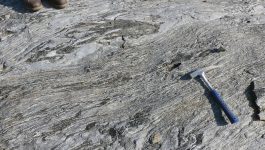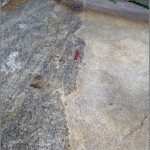Radon Gas
Radon is a colorless, odorless gas that is the second leading cause of lung cancer in the United States. It is formed by the natural decay of uranium in the granitic bedrock, as well as other metamorphic and sedimentary rocks. As radon gas is released, it travels through the bedrock and soil into the basement of houses and buildings by entering through cracks, floor drains, etc. Radon is typically found in rocks like granite, slate, and rhyolite as well as along fault lines. Radon can also enter drinking water facilities when it infiltrates groundwater. The concentration of radon is variable depending on the amount radioactive materials in the bedrock, soil moisture content, groundwater circulation, and atmospheric pressure gradients. It is also highly mobile in groundwater, enabling it to be redeposited in different areas, therefore affecting concentration levels in a location.
Most of Virginia falls into the high or moderate risk categories, with the Valley and Ridge and Piedmont provinces being at most risk for high radon levels. In contrast, the coastal plain has the least amount of radon levels. The most danger comes from asbestos that is imbedded in building materials that are in the process of demolition or reconstruction.
Additional radon resources:
- Radon Resources
- Virginia Department of Health
- Virginia Radon Map by county
- data for radon levels for each county
- Radon in water
Asbestos
Asbestos is a generalized term for minerals that are hydrated magnesium silicates that crystalize as long, thin fibers. In Virginia these minerals take form as actinolite, anthophyllite, tremolite, and byssolite. These minerals mostly occur in ultramafic rocks such as soapstone and serpentine found in the Blue Ridge and Piedmont. Over the past few decades there has been a mounting case against asbestos. What was once mined throughout Virginia for commercial and insulation uses is now associated with serious health problems. Inhalation and exposure to asbestos is linked to respiratory issues and lung cancer.
Additoinal asbestos resources:

